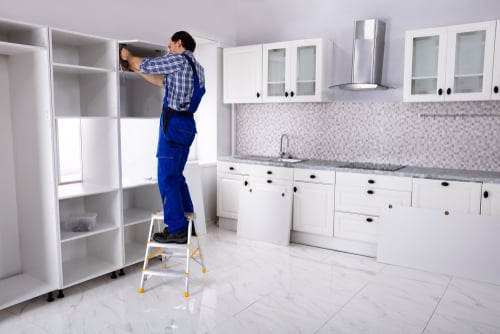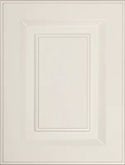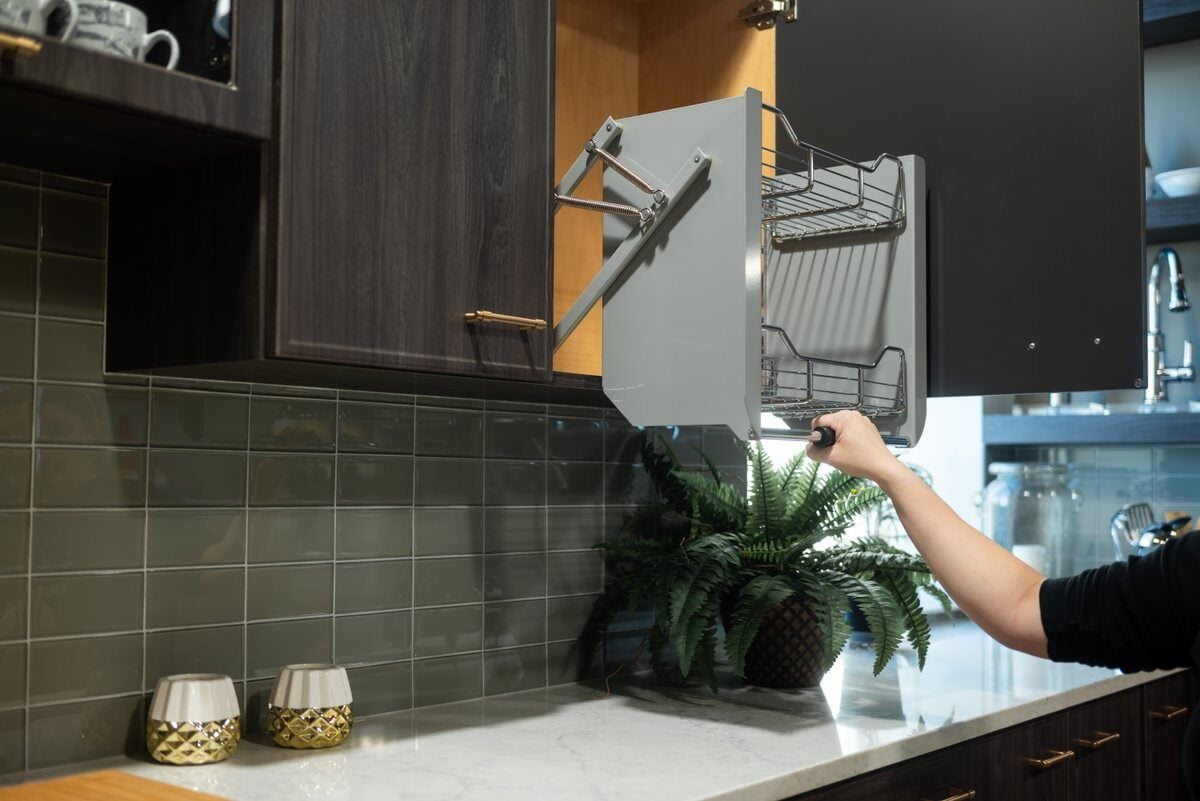What you need to know when weighing cabinet refacing against full replacement:
- Refacing updates style while keeping existing cabinet boxes.
- Professionally refaced cabinets can last 20+ years.
- Replacement usually adds more resale value than refacing.
- Refacing is cheaper and eco-friendly, reducing waste.
- Replace cabinets if boxes are damaged or layout needs change.
Are you starting to feel like your kitchen’s a bit outdated? Maybe you’ve found yourself eyeing shiny new cabinets, imagining how they’d transform your space. But then comes the dilemma: Do you really need to replace them, or could you get away with refacing? It's a question a lot of homeowners face—especially when trying to balance budget, style, and the desire for a fresh look. You might be wondering, Is refacing worth it? How long will it last? Don’t worry, we’re here to break it all down so you know exactly what you’re doing.
And if you're still on the fence or just need a little expert guidance, don’t hesitate to reach out for help. You can always get in touch with your local custom kitchen cabinet company or even swing by a home improvement showroom to explore your options. Sometimes, having a professional weigh in can really help you feel confident about the best choice for your kitchen—and your budget. That’s why the team at Kitchen Magic is here with expert tips, so you can move forward with confidence knowing you’ve made the right decision for your kitchen.
Is it worth it to reface kitchen cabinets?
 Refacing your kitchen cabinets can be an absolute game-changer—and it's perfect for those who love their kitchen layout but crave a visual update. You keep the solid structure of your cabinets but change out the doors, drawer fronts, and hardware for a whole new style. It’s like giving your kitchen a facelift without the cost of a full renovation.
Refacing your kitchen cabinets can be an absolute game-changer—and it's perfect for those who love their kitchen layout but crave a visual update. You keep the solid structure of your cabinets but change out the doors, drawer fronts, and hardware for a whole new style. It’s like giving your kitchen a facelift without the cost of a full renovation.
Refacing is not only easier on your wallet, but it’s also eco-friendly since you’re reusing the cabinets you already have. Plus, you get to completely customize the look. Whether you're dreaming of sleek, modern finishes, classic wood tones, or something in between, there’s a style and color to match your vibe. You can get creative and make your kitchen look amazing without compromising on style or quality. So, is it worth it? Absolutely!
How long do refaced cabinets last?
One of the coolest things about refacing is that it can give your kitchen a fresh, brand-new look that lasts just as long as replacing your cabinets—seriously, we’re talking 20 years or more. As long as it’s done professionally (because let’s face it, you don’t want your DIY attempts turning into a kitchen disaster), your refaced cabinets can stay looking fabulous for decades. The key to longevity is picking high-quality materials—think solid wood doors or durable veneers—and pairing them with sturdy hardware.
The best part? You get all the perks of new cabinets without the stress of a total teardown. Just keep up with some light maintenance—regular cleaning and a quick check for any signs of wear will keep them looking sharp.
Which option adds more value to your home?
When it comes to boosting your home’s value, replacing cabinets often makes a bigger splash. A full cabinet replacement can make your kitchen feel brand new, which is a huge plus for potential buyers and can really up your home’s appeal. But don’t count refacing out just yet! If your cabinets are in good condition and just need a style refresh, refacing can still add plenty of value. It’s a smart, budget-friendly way to give your kitchen a fresh look, which can be just as attractive to buyers.
Does refacing improve resale value as much as replacement?
Not quite, but it still makes a real impact. Refacing can boost appeal and resale value, often delivering a return of about 60–75% when your layout works well and the cabinet boxes are in solid condition. A full replacement typically lands higher, around 70–100% ROI, since it gives buyers the feel of a brand-new kitchen, solves layout or storage issues, and showcases premium materials. The actual return always depends on your market, the quality of materials, and craftsmanship. If you’re listing soon and the structure is sound, a fresh facelift can be the smartest, quickest win. If you plan to stay longer or need more function, full replacement usually brings the strongest long-term payoff.
Is refacing an eco‑friendly option?
Yes, cabinet refacing is one of the most eco-friendly kitchen upgrades you can choose. By keeping the existing cabinet boxes, you avoid sending loads of demolition waste to the landfill. Instead of ripping out heavy wood or composite frames, you’re simply giving them a fresh new look with veneers, laminates, or solid wood doors. Refacing also uses far fewer raw materials than building brand-new cabinets. That’s why many homeowners looking for a greener remodel go with refacing; it cuts waste, saves resources, and keeps the environmental footprint of the project much smaller.
Can you change a kitchen layout with refacing?
Short answer: No. A refacing makeover keeps the existing cabinet boxes in place, so the footprint and layout do not change. If you want to move cabinets or appliances, add an island, widen openings, or reconfigure corners for pull-outs or Lazy Susans, you will need new cabinets.
What refacing can change
Refacing is a cosmetic and hardware upgrade that refreshes what you see and touch every day:
- New doors and drawer fronts, updated styles and profiles
- New veneers or laminates on face frames and exposed ends
- Hardware upgrades like handles, knobs, soft-close hinges and slides
- Decorative details like crown molding, light-rail, toe-kicks, and paneling
- Drawer box upgrades inside the same opening, for smoother, stronger operation
What refacing cannot change
These require new cabinet boxes or a partial rebuild:
- Room layout, cabinet footprint, and appliance locations
- Cabinet widths, heights, and opening sizes
- Adding an island or pantry where none exists
- Converting a standard base into a wide drawer base if the opening is too small
- Corner cabinet type, for example switching from a blind corner to a full Lazy Susan when the box does not support it
Do you have to remove countertops to reface cabinets?
Usually, no. Because the cabinet boxes stay in place, pros can work around your existing countertops, flooring, and backsplash without any issues.
There are a couple of exceptions:
- If the countertop slightly overlaps the cabinet frame and blocks access for applying veneers, it may need to come off temporarily.
- If you’re planning to upgrade your countertops anyway, many contractors suggest doing it during or right after refacing so everything fits together seamlessly.
For most projects, though, your countertops can stay right where they are—saving you extra hassle, time, and money.
How much would it cost to reface my kitchen cabinets?
Cabinet refacing generally costs significantly less than a full replacement, often making it one of the most budget-friendly ways to refresh a kitchen. The final price depends on several factors, including:
- Kitchen size – larger spaces require more materials and labor.
- Material choice – laminates tend to be more affordable, while wood veneers or solid wood doors raise the cost.
- Hardware upgrades – adding new handles, hinges, or soft-close features increases the budget.
- Finishes – extras like glazing, crown molding, or decorative panels can also add to the total.
For many homeowners, refacing strikes the right balance—delivering a fresh, high-end look without the expense of a full cabinet replacement.
Is refacing always cheaper than cabinet replacing?
Yes, refacing almost always costs less than installing brand-new cabinets. Because you’re reusing the existing boxes, you avoid most of the demolition, haul-away, and full installation labor that drive up replacement costs, which makes it a more budget-friendly option.
How the value plays out:
- If you’re selling soon: Refacing is a fast way to boost appeal and give your kitchen a clean, updated look.
- If you’re staying long-term: Replacement gives you full design flexibility and a lifespan measured in decades, which can deliver stronger value over time.
When should I choose to replace rather than reface cabinets?
You should replace your cabinets if they’re structurally weak, water-damaged, or simply no longer meet your needs. Refacing is only a smart option when the cabinet boxes are solid and the existing layout still works for your lifestyle.
New cabinets are usually the better choice if any of the following are true:
- The cabinet frames are warped, cracked, or starting to rot
- There’s ongoing moisture damage or mold inside the boxes
- You want to move appliances or reconfigure the layout
- The current setup feels outdated and no amount of refacing would improve functionality
- You need custom features like tall pantry cabinets, deep drawers, or built-in organizers
- The existing boxes are made of low-quality particleboard that won’t hold up to a refacing job
If your cabinets show these issues, a facelift won’t fix the underlying problems. A full replacement ensures strength, longevity, and better use of space.
Can damaged cabinets be refaced?
Minor damage can be repaired before refacing, but major damage requires replacement.
- Small scratches, dings, or worn edges will be concealed by the refacing process and will not require extra labor or time to repair.
- Likewise, surface stains or faded finishes are irrelevant as they are no longer visible once new veneers or doors are installed.
- But if the cabinet box is cracked, flaking, warped, or water-damaged, an all new replacement cabinet would be the better solution. Fortunately, in many cases, it is possible to replace just one damaged cabinet rather than replace all, and refacing is still an option.
When these issues are present, giving your cabinets a facelift won’t solve the real problems. A full replacement not only restores strength and durability but also gives you more freedom to design a kitchen that makes better use of the space and lasts for the long haul.
Planning tips & what to ask contractors
Getting ready for a custom cabinet project? A little planning and knowing the right questions to ask can be the difference between a smooth makeover and a stressful remodel.
Good questions to ask your contractor
- What veneer materials do you offer - wood, laminate, or thermofoil?
- Can you show me samples or photos of past projects?
- How long will my kitchen be out of commission?
- Do you provide a warranty on both the materials and the labor?
- Can you also handle upgrades like countertops, backsplashes, or hardware?
Smart planning tips
- Decide on your budget before you start choosing materials.
- Think about the overall look, make sure cabinet colors, hardware, and counters all work together.
- Pick a time that’s convenient, since your kitchen will be partly out of use.
- Always get a few quotes so you can compare costs and services.
When you’ve got these details sorted, the whole process runs more smoothly. Plus, you’re less likely to deal with surprise costs, mismatched finishes, or a project that drags on longer than it should.
Need expert advice? Contact an experienced custom kitchen cabinet company today!
 At the end of the day, both refacing and replacing offer great benefits. If your cabinets are structurally sound but just need a style upgrade, refacing is a smart, cost-effective solution. But if your cabinets are showing their age or were never great to begin with, replacing them might be the better move for the long haul. Either way, you’ll be giving your kitchen the upgrade it deserves!
At the end of the day, both refacing and replacing offer great benefits. If your cabinets are structurally sound but just need a style upgrade, refacing is a smart, cost-effective solution. But if your cabinets are showing their age or were never great to begin with, replacing them might be the better move for the long haul. Either way, you’ll be giving your kitchen the upgrade it deserves!
If you’re still unsure or have some ideas you want to explore, Kitchen Magic is here to help! Our team is ready to discuss your vision, answer any questions, and guide you through the process—whether you're leaning toward a quick refresh or a total kitchen overhaul. Reach out to us today, and let's make your dream kitchen a reality!








